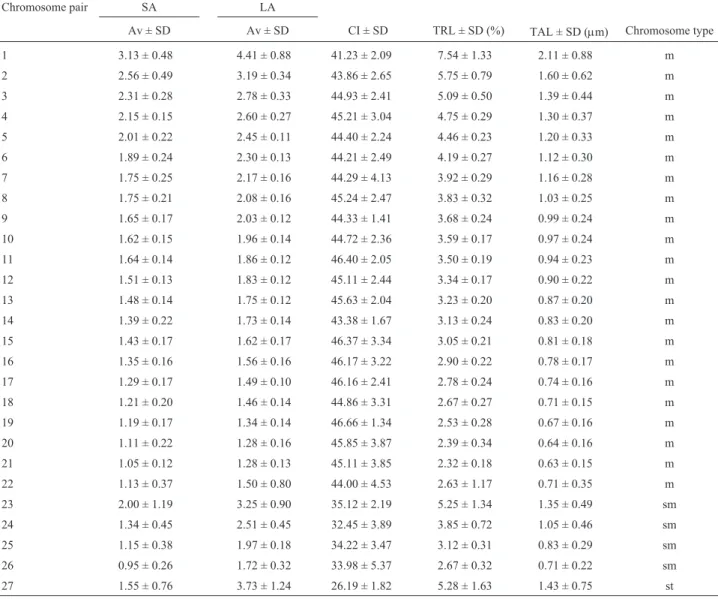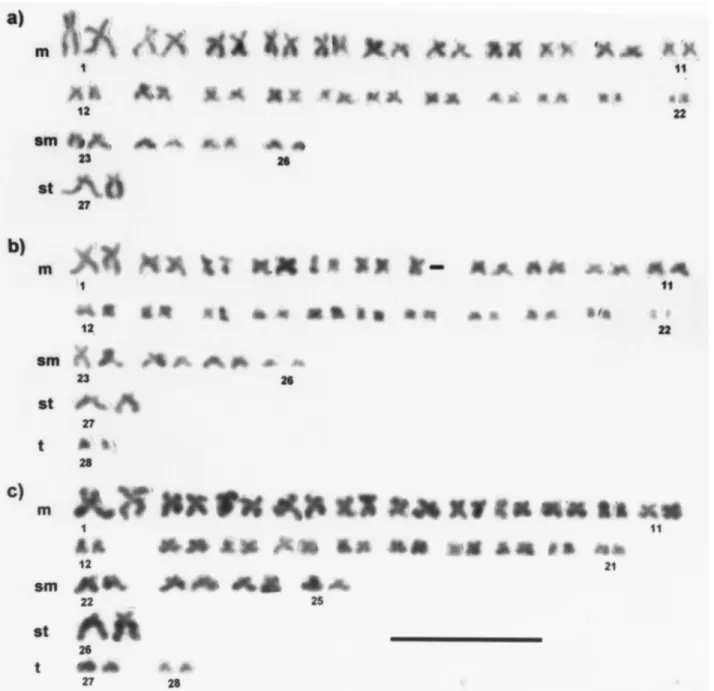Karyotype and nuclear DNA content of Trichomycterus areolatus (Siluriformes, Trichomycteridae)
Texto
Imagem



Documentos relacionados
Thus, the objective of the present study was to analyze and compare information about the nuclear DNA content and the diploid number in 20 species of Siluriformes fish, in order
To determine the ploidy level of a genotype, a count of the chromosome number or an estimate of the DNA content can be used, requiring comparison of these results with plants of
The tetraploid plants obtained in the experiment generated 164 progenies, of which 109 presented DNA content compatible with the tetraploid level, showing stability of chromosome
The cytogenetic characterization of the chromosome number, meiosis and karyotype were all performed with the São Borja population, and an analysis of pollen fertility was
Cytogenetic studies carried out on twenty two species belonging to ten genera of Hypoptopomatinae (Table 1) showed that this group has a relatively constant diploid number
discus present the most derived karyotype amongst all cichlids given the pronounced differences observed in the diploid number (2n=60 chromo- somes) and fundamental number,
In the first group the first metacentric pair is considerably larger than the sec- ond metacentric pair and the species presented silver- staining NORs in the pericentromeric
In Akodon the diploid chromosome number ranges from 2n = 9 or 10 to 2n = 52, with the majority of the mem- bers of this genus being characterized by relatively low chromosome